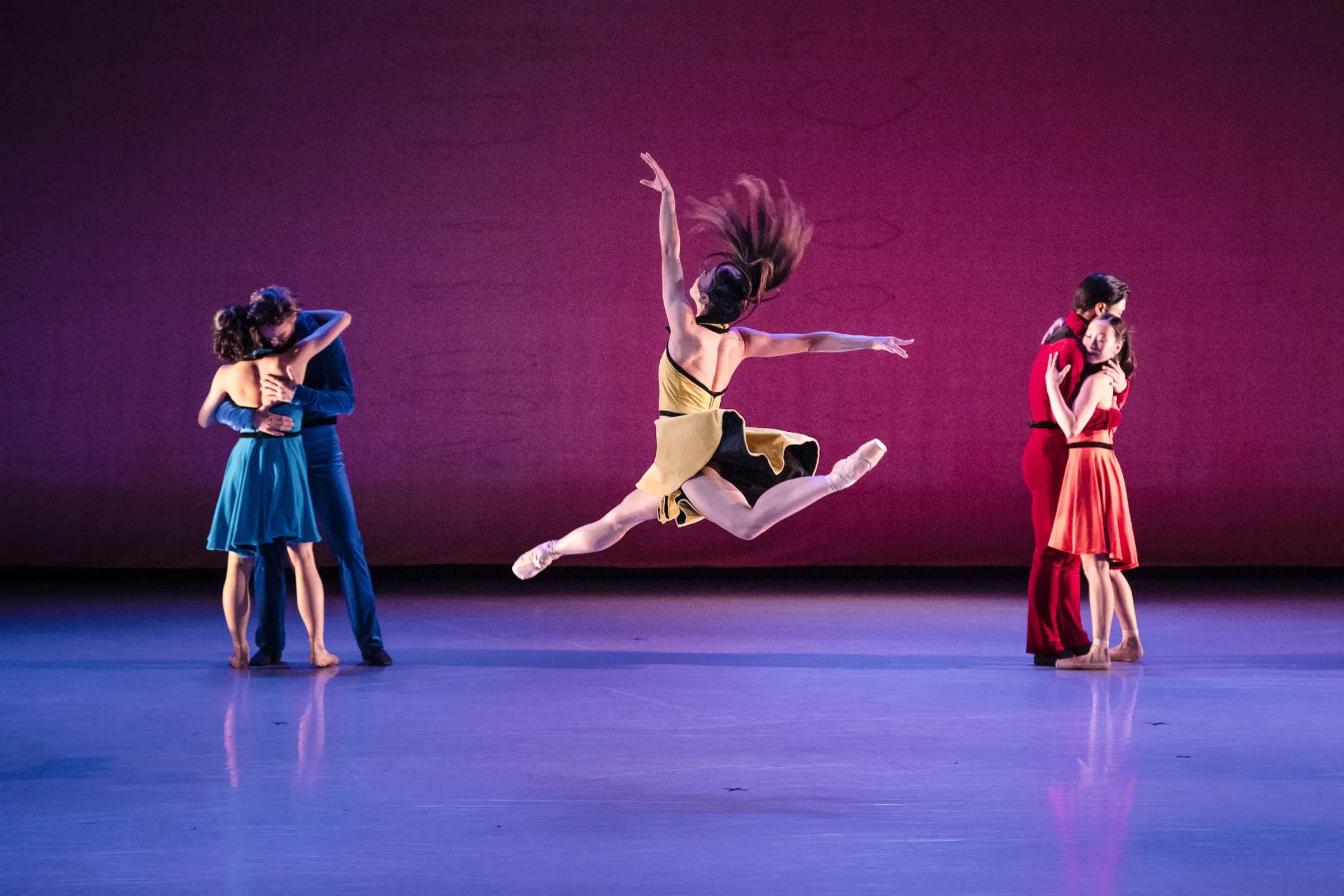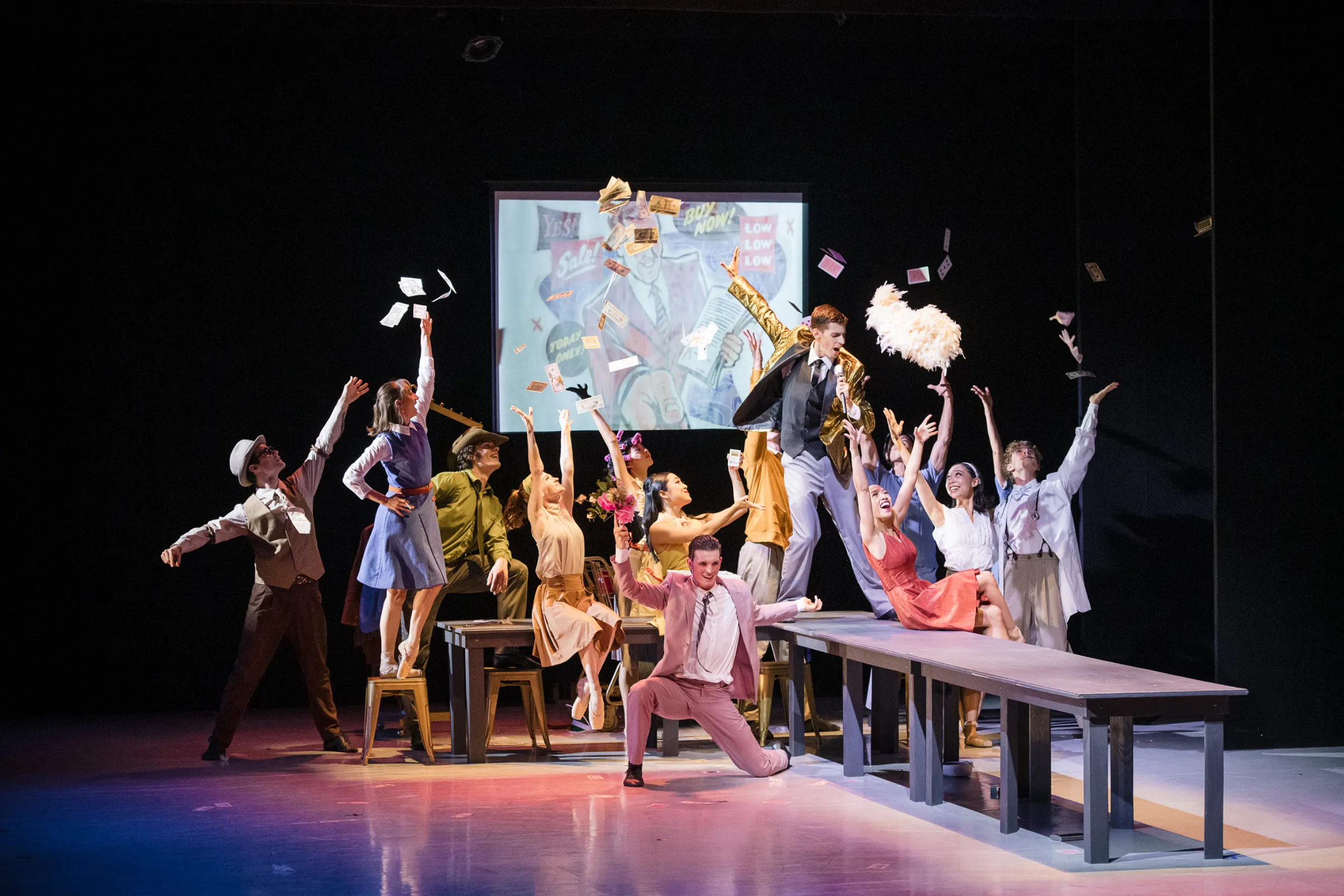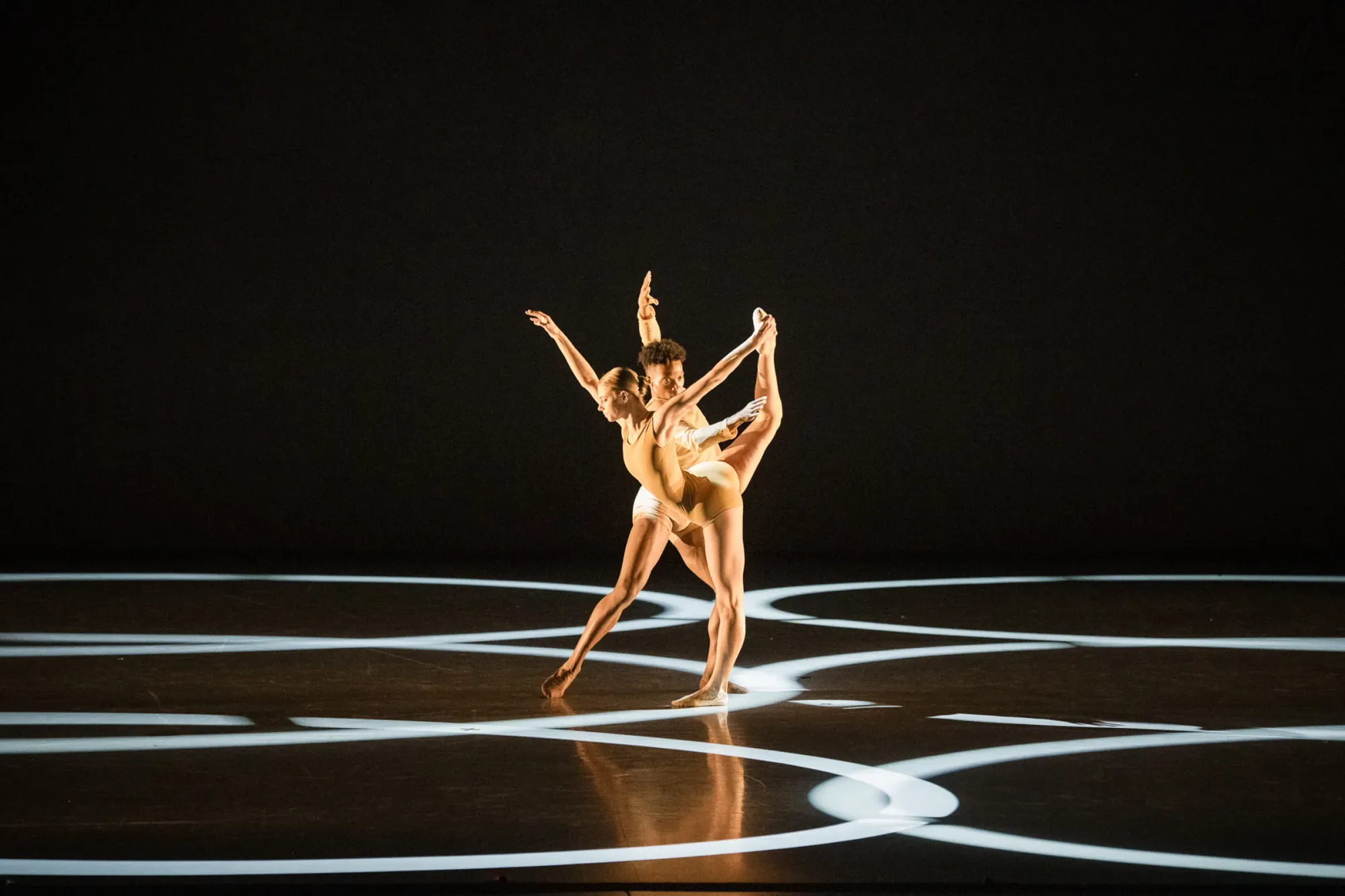Creations in Studio K
Tulsa Ballet Studio K
Sept. 24, 2023
Like a great run for a goal in a soccer game or an unbelievable series of bars from a rapper, moments sometimes unfold in a dance performance that make my heart race and (maybe this is just me?) the words “let’s f — ing gooooo” silently exit my mouth.
If it’s been a while since you had an experience like that with dance, get yourself to wherever Tulsa Ballet’s second company is performing next. And go easy on the caffeine before you go: Trust me, you won’t need it.
Made up of young adult dancers from all over the world who are just starting out in their professional careers, TBII was the star of the most recent Creations in Studio K, Tulsa Ballet’s 16-years-strong experiment in ensuring the growth and relevance of this art form. The annual Creations program presents three short newly commissioned pieces, interspersed with video interviews with the choreographers that contextualize and illuminate work that doesn’t have the familiarity of, say, The Nutcracker. More a tasting menu than a full-on meal, the program is taut, accessible, and satisfying; even if not every piece suits your palate, you’ll likely experience something that does.
For me, that piece was “The Sun Sleeps,” which Boston-based choreographer Yury Yanowsky created here in 2019 and almost totally reworked for the current TBII ensemble, which moved with mastery through this sinuous, nonstop movement language. A cello-heavy score by Bryce Dessner & the Kronos Quartet, Lucas Vidal, and Ludwig Göransson created propulsive loops for movement that bucked and curled around every sound, as the bare-legged dancers rippled the music through space with shifting angles and mesmerizing phrasing. Attention to split-second detail never competed with natural ease, as their calm focus stabilized subtle explosions of suspension and release. These young artists have been learning to speak “contemporary” since their earliest training; they’re not catching up to the future of ballet, but embodying it right now.
Toward the end of the piece, they surpassed themselves in a thrilling, interlinked series of short solos that built in momentum and intensity — until the exceptional Styles Dykes, as casually as if he were stepping out of bed, dropped an out-of-nowhere, death-defying upside down leap, then seamlessly rejoined the ballet’s other standout, Morgan Davis, and the rest of the ensemble as the piece pulsed to its finish. I can be a little grumpy in general about the now-habitual standing ovations given at performances around here, but this one really deserved the one it got.

The other pieces on the program — “Only the Lonely” by Adam Hougland and Ballyhoo by Penny Saunders, both made for the main company — explored different facets of contemporary ballet. Hougland has painted in dark tones with TB in the past; for this piece he let a romantic note shine through, to songs by Roy Orbison. The choreography didn’t quite sing at the great crooner’s level — it was a fairly standard assemblage of contemporary-ish moves — and I wasn’t emotionally invested enough at the end of only 20 minutes to need its culminating reprise of (almost literally) everything that had gone before. But the piece created a sweet showcase for dancers who gave each moment their all, especially the rangy, thoughtful Jun Masuda, whose solo to “Running Scared” touched the distinctive Orbison note of desperate longing.

“Ballyhoo” was more complex, a light-but-barbed think-piece of dance theatre that invited us to look at the ways propaganda (in politics or in advertising) both plays on and erases identity. Mid-century ads flickered on a TV-like projection while vintage voices urged better living through conformity, and amusingly stereotyped characters (Cowboy, Evil Girl, Professor) embodied those marketing archetypes while revealing their double edge. Dance often struggles with both comedy and “message,” but Saunders deftly merged the two through smartly-curated music (Perry Como, Eartha Kitt, Tennessee Ernie Ford), props and lighting effects (I loved an opening flash-bulb bit that lit up the audience as the dancers entered from the back of the house), and deceptively simple physical moments that held a quiet depth.
In the end, Saunders didn’t show us what we might have expected — one character breaking out from the pack, say, rallying the others to independence. Instead, she removed the urgency of all the ballyhoo for a few minutes, sending the whole ensemble into a slow-motion journey across the stage where we suddenly felt their human-ness. When they and the music wound back up to full speed, it was that soft slow-motion I remembered: the yearning to see and be seen outside the demanding, life-erasing gaze of everyone trying to sell you something.






